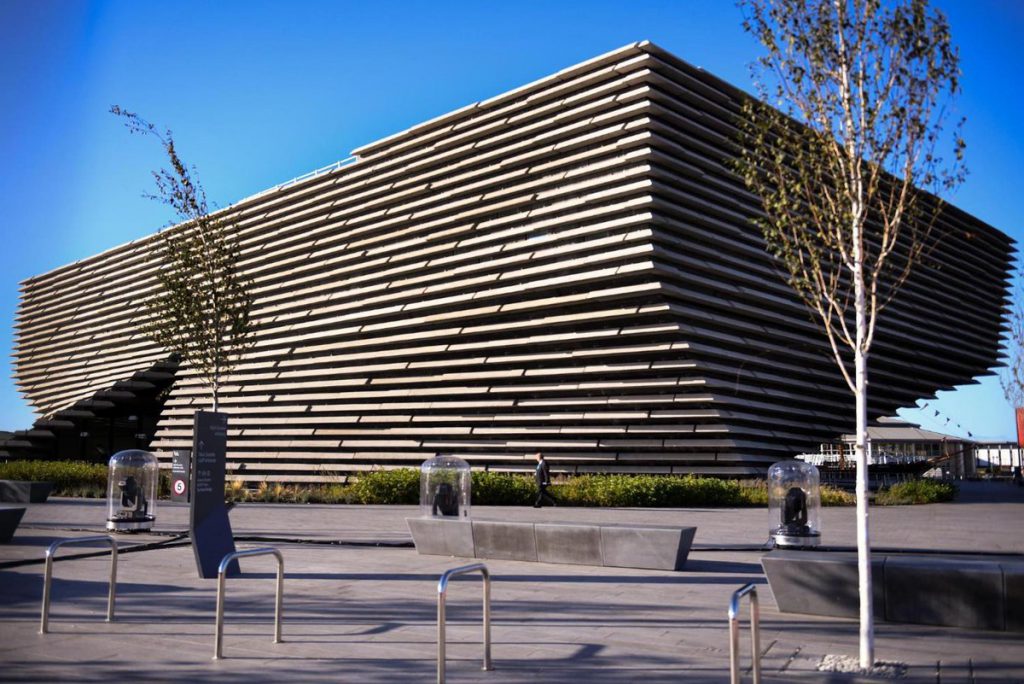An architectural gem on Scotland’s northeastern coast in the angled shape of design museum V&A Dundee has sparked hopes of a new start for a long-forgotten city.
Japanese architect Kengo Kuma, who is designing Tokyo’s 2020 Olympic stadium, has created a structure that resembles two hulls sitting side by side on the banks of the River Tay in a nod to Dundee’s long history of shipbuilding.
Its concrete walls are covered in panels of grey rough stone to recall a craggy Scottish cliff, and an arch between the twin edifices links the road to the river – a reflection of Kuma’s goal to reconnect the city with the sea.
The first offshoot of the Victoria and Albert Museum outside London houses treasures such as a salvaged tearoom designed by Charles Rennie Mackintosh and a 15th century Book of Days.
These vye with modern artifacts such as a dazzling Cartier tiara with moving wings and original storyboards from Dundee’s own Beano children’s comic, featuring Dennis the Menace in his characteristic striped jumper.
Showbiz glamour is provided by a gown worn by actress Natalie Portman in the film “Star Wars: Attack of the Clones”.
The museum’s curators hope it will transform Dundee, around an hour’s journey north of Edinburgh, into a must-see destination for tourists and art lovers in the same way as the Spanish port city of Bilbao was transformed by its titanium Guggenheim Museum.
“It is a cultural milestone for Dundee, and also a landmark moment for the history of the V&A, an important opportunity for the UK to show the world how design can enrich lives,” said Tristram Hunt, director of the V&A in London.
Dundee’s history is steeped in seafaring, textiles, and publishing. But in recent years its decline has made it more well-known as the place in Britain with the highest proportion of drug-related deaths.
V&A Dundee is already changing its fate; tourist numbers have risen 10 percent in the past year, Dundee council leader John Alexander said.
“Tangible benefits (from the museum) are a renewed confidence, a renewed sense of pride, a fire in the belly that wasn’t there 10 years ago. For too long we were seen as a poor relation compared to larger neighbouring cities.”
The centre, which opens on Saturday, expects to receive 500,000 visitors in the next year, more than three times Dundee’s population.
“We are trying to address the social ills that face cities in western societies (and) the V&A is a core component of that,” he told reporters at a news conference.
The idea for a museum came when officials at Dundee University invited former V&A director Mark Jones to take part in the 1 billion pound ($1.3 billion) waterfront regeneration project 10 years ago.
Hunt said V&A Dundee was “a truly international museum firmly rooted in local relevance … at a time of far too much inward-looking nationalism and parochialism.”
“Museums can and do make a difference.”







